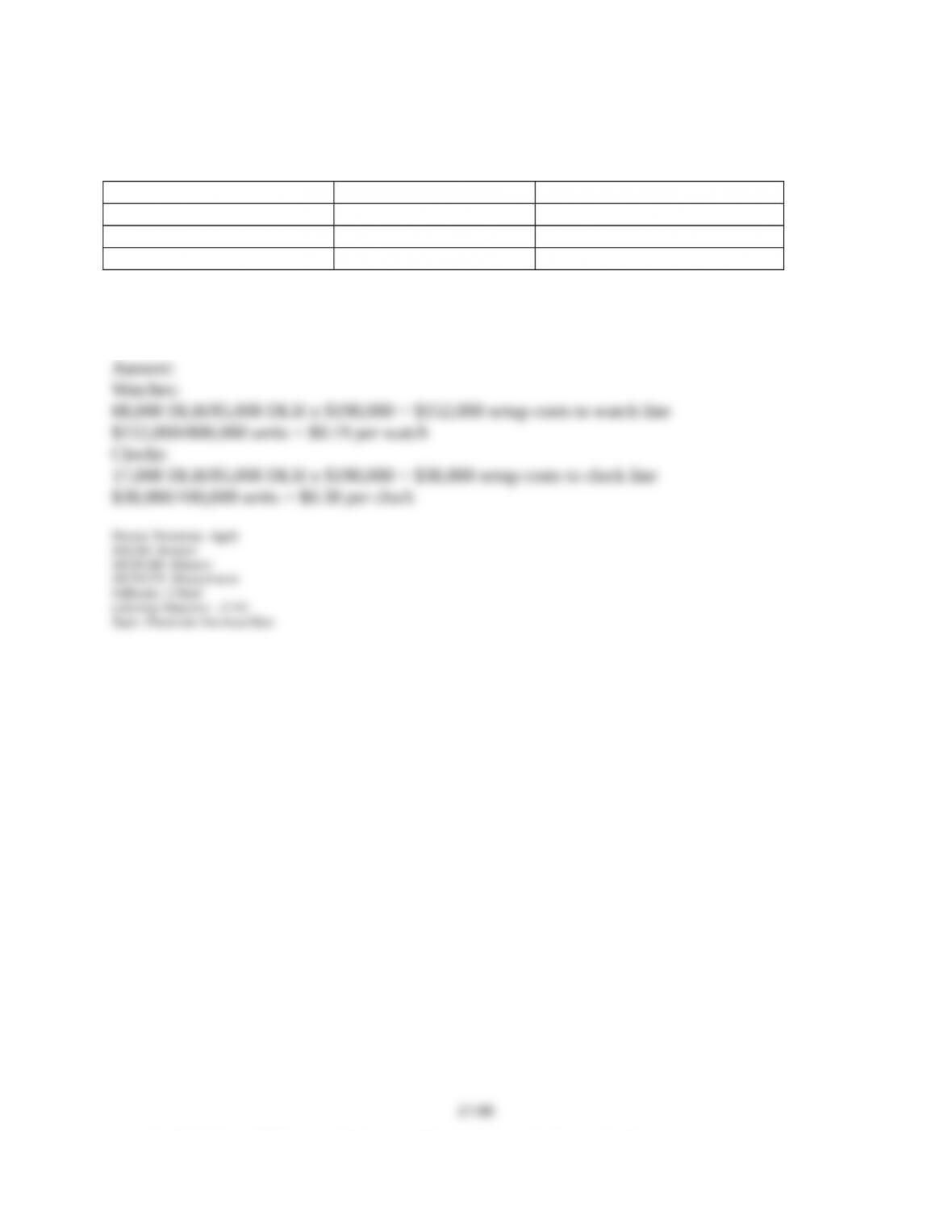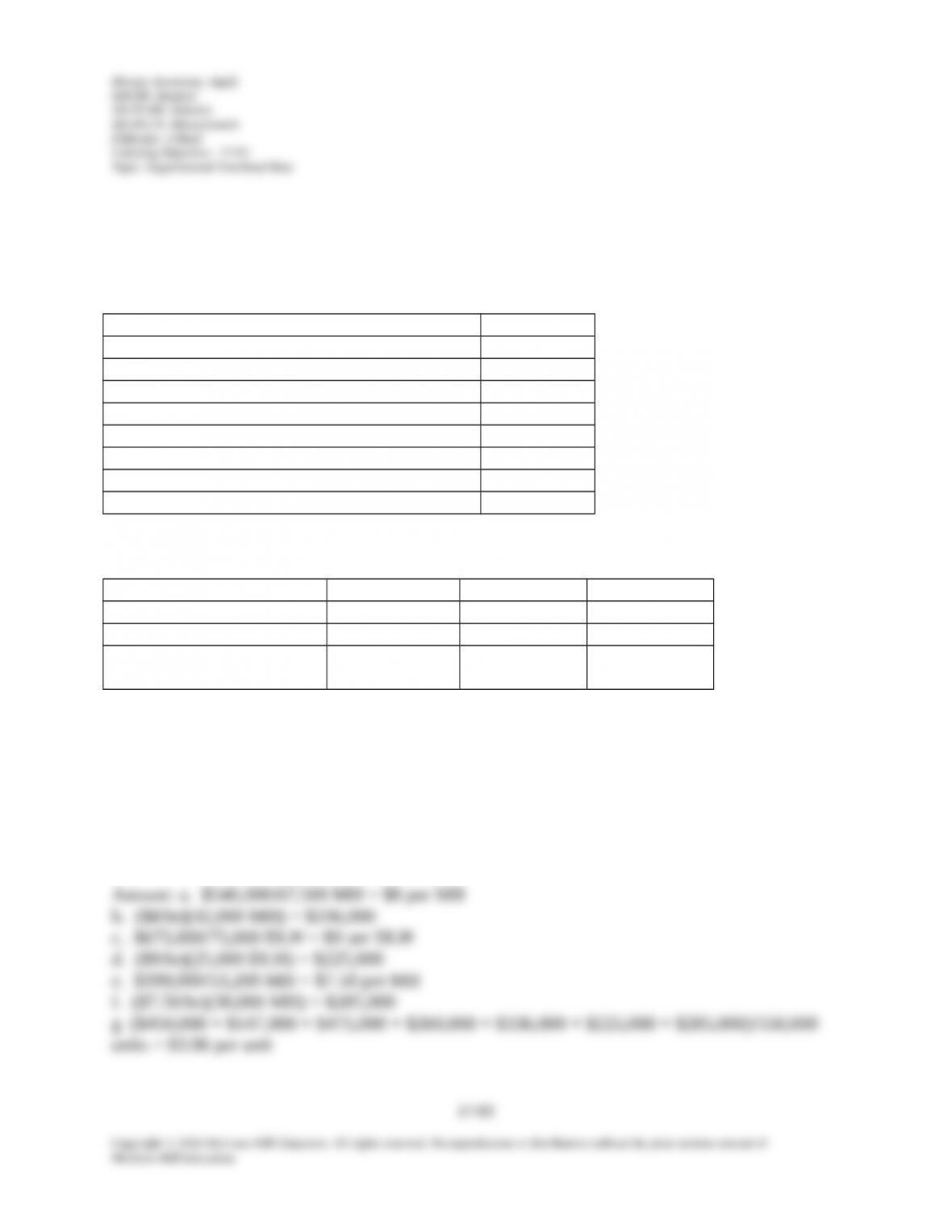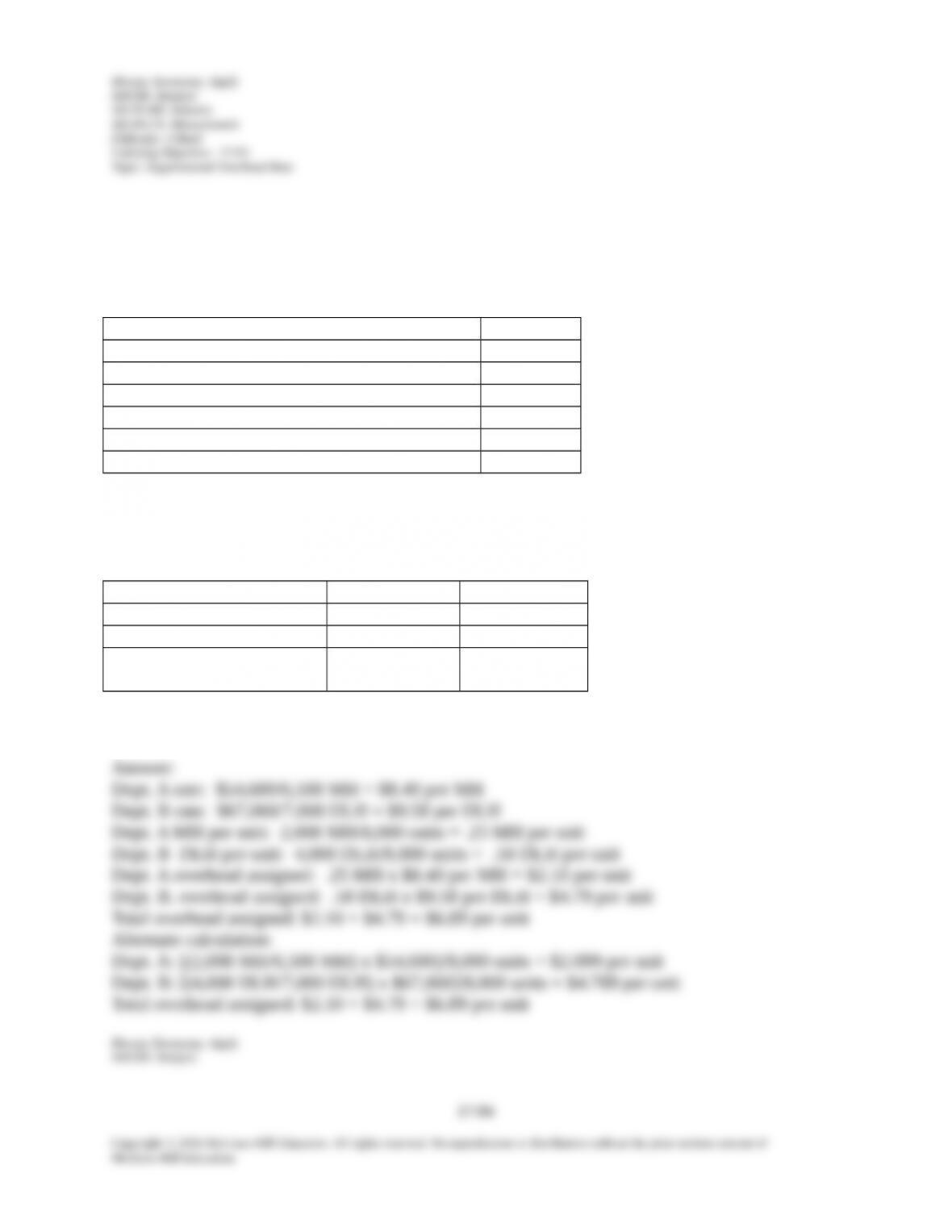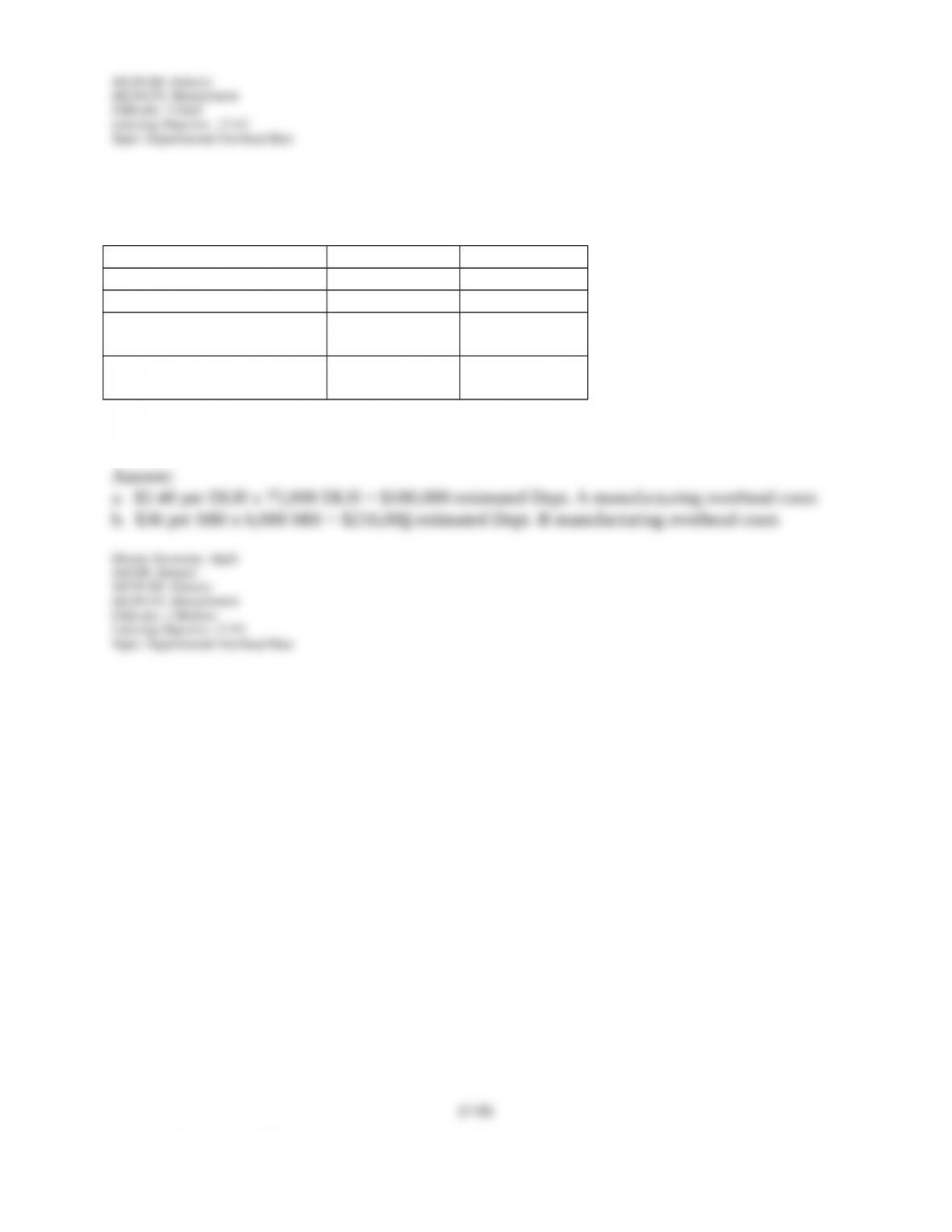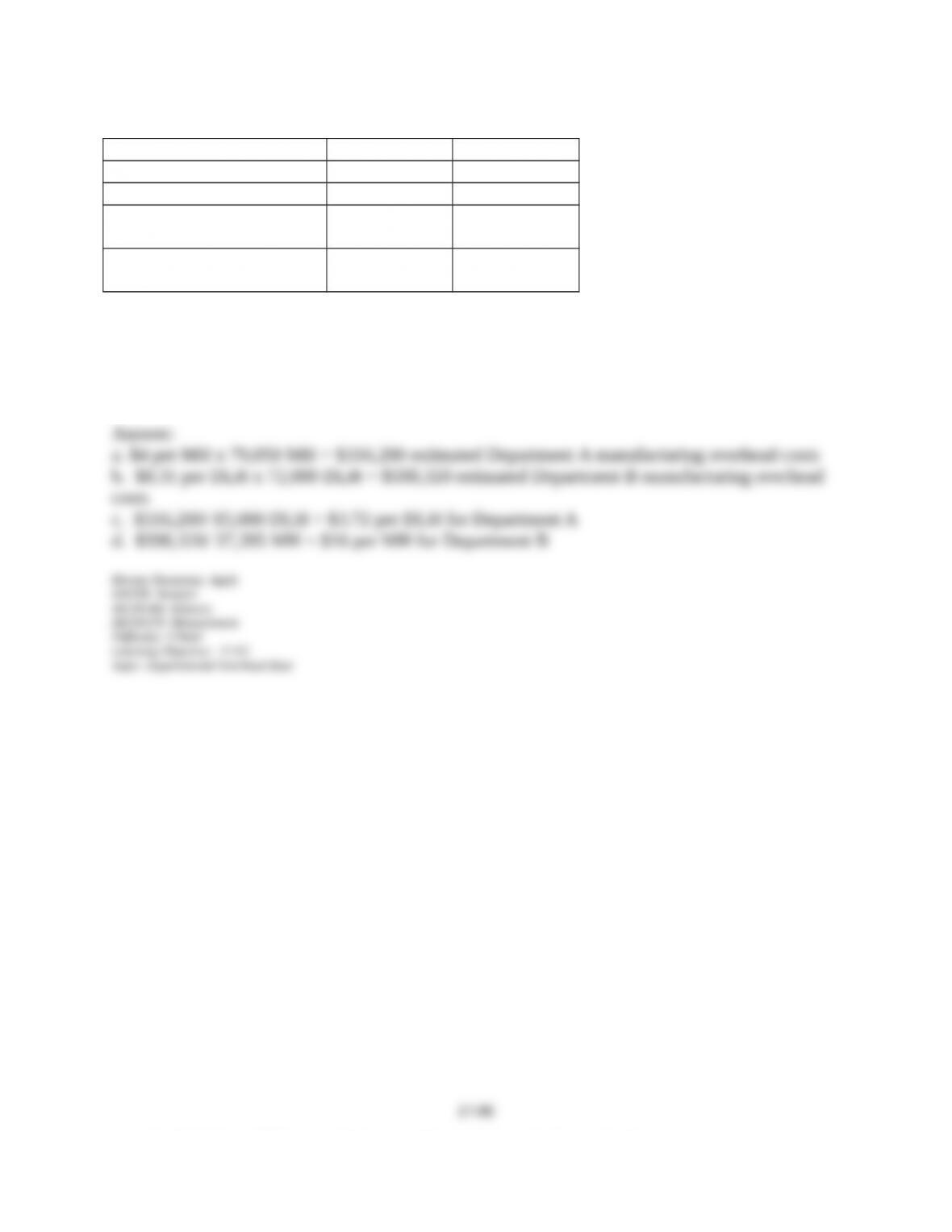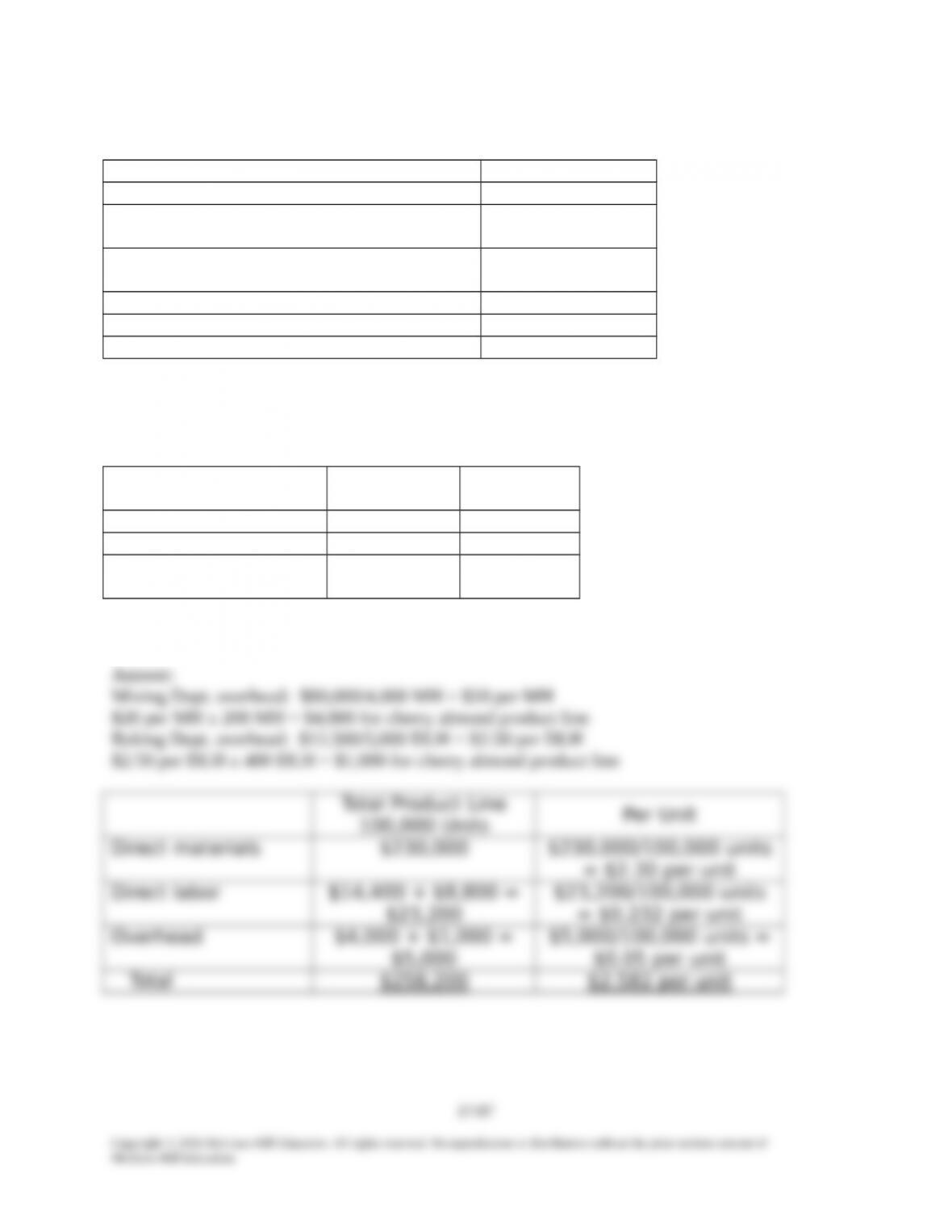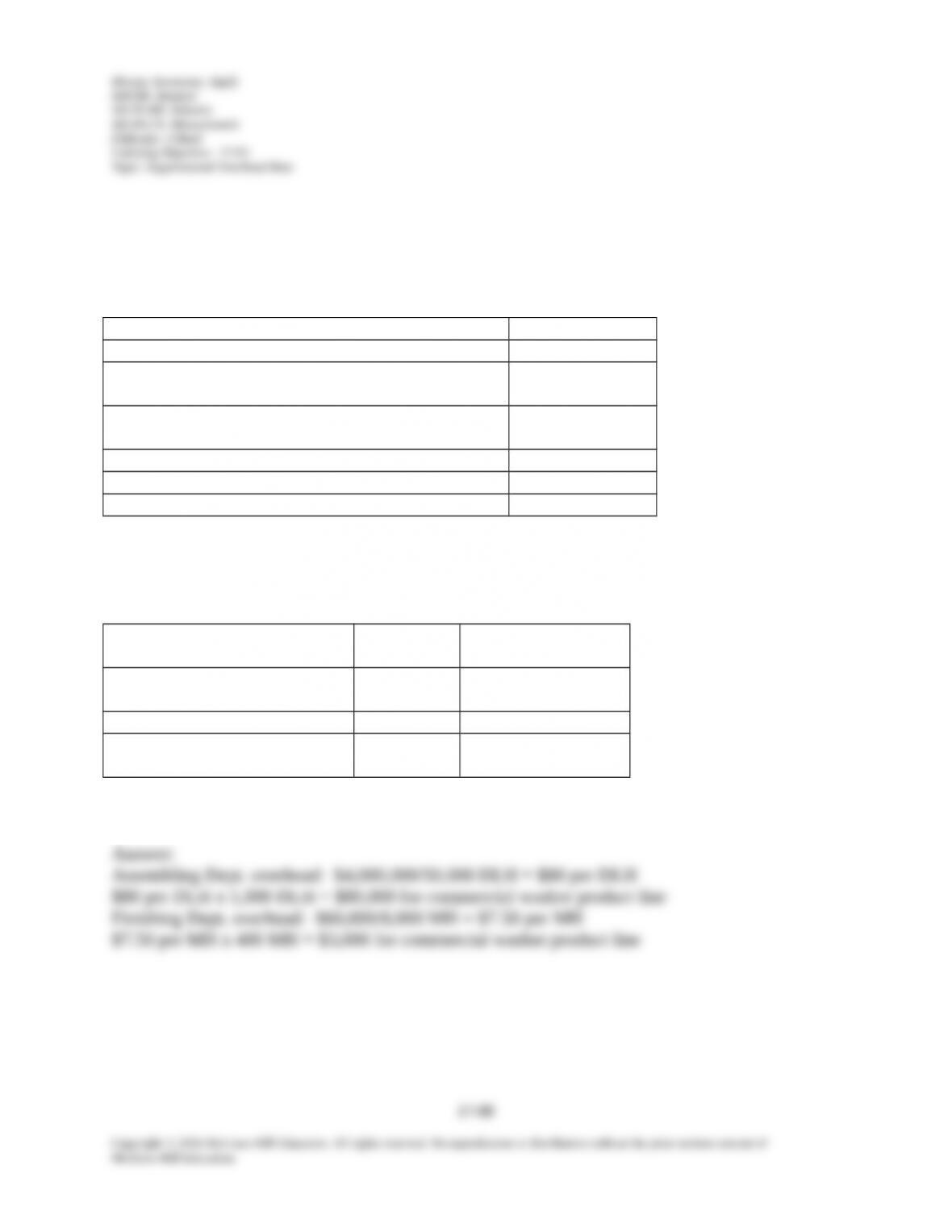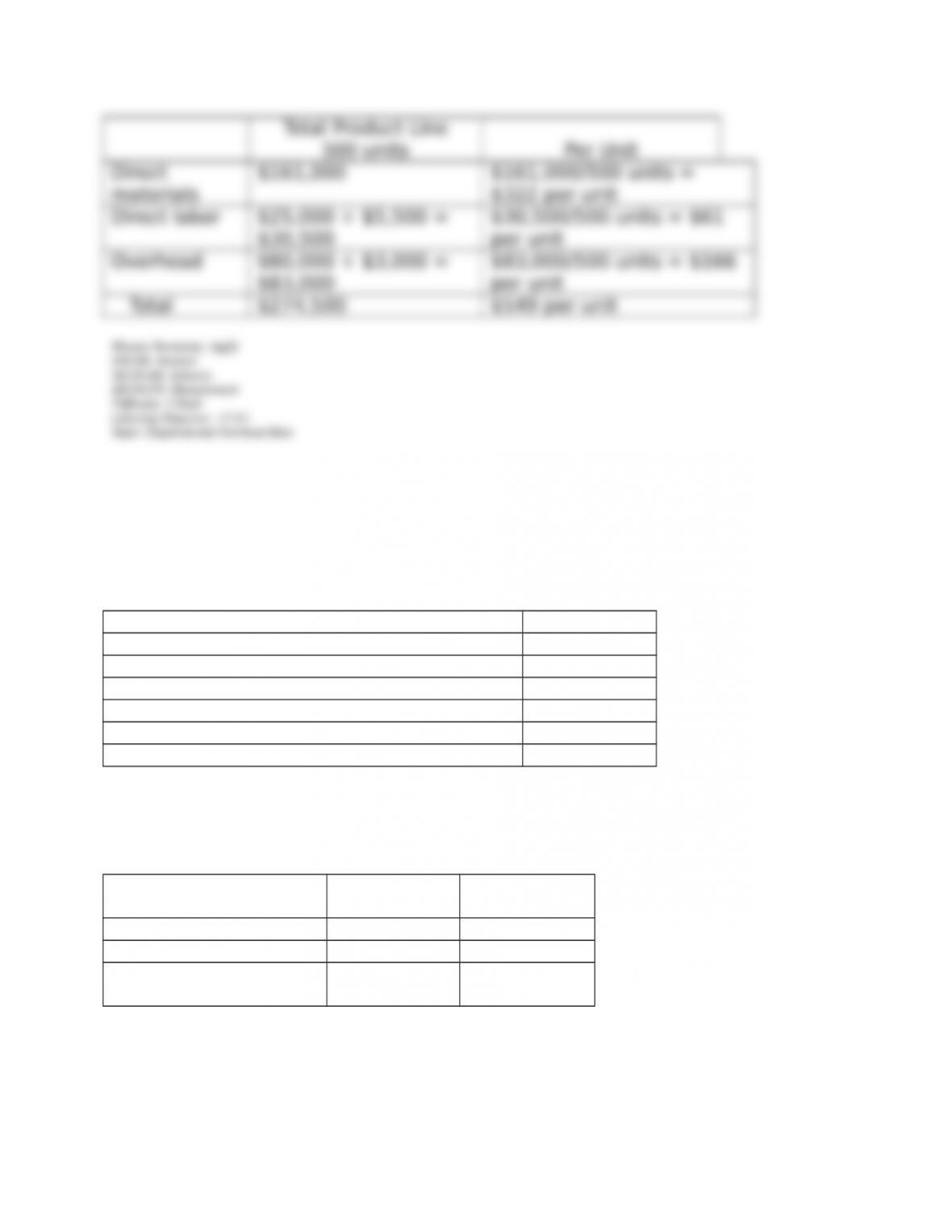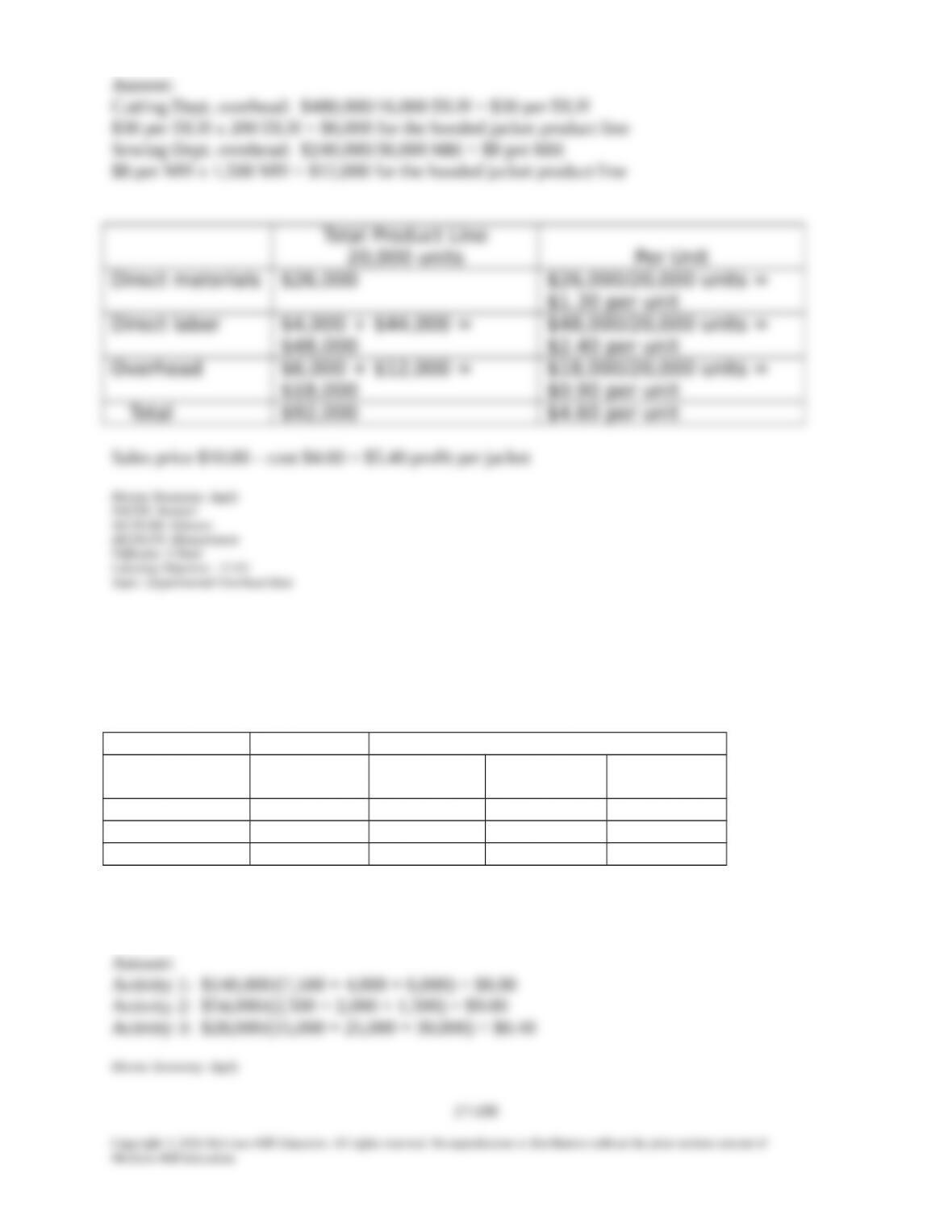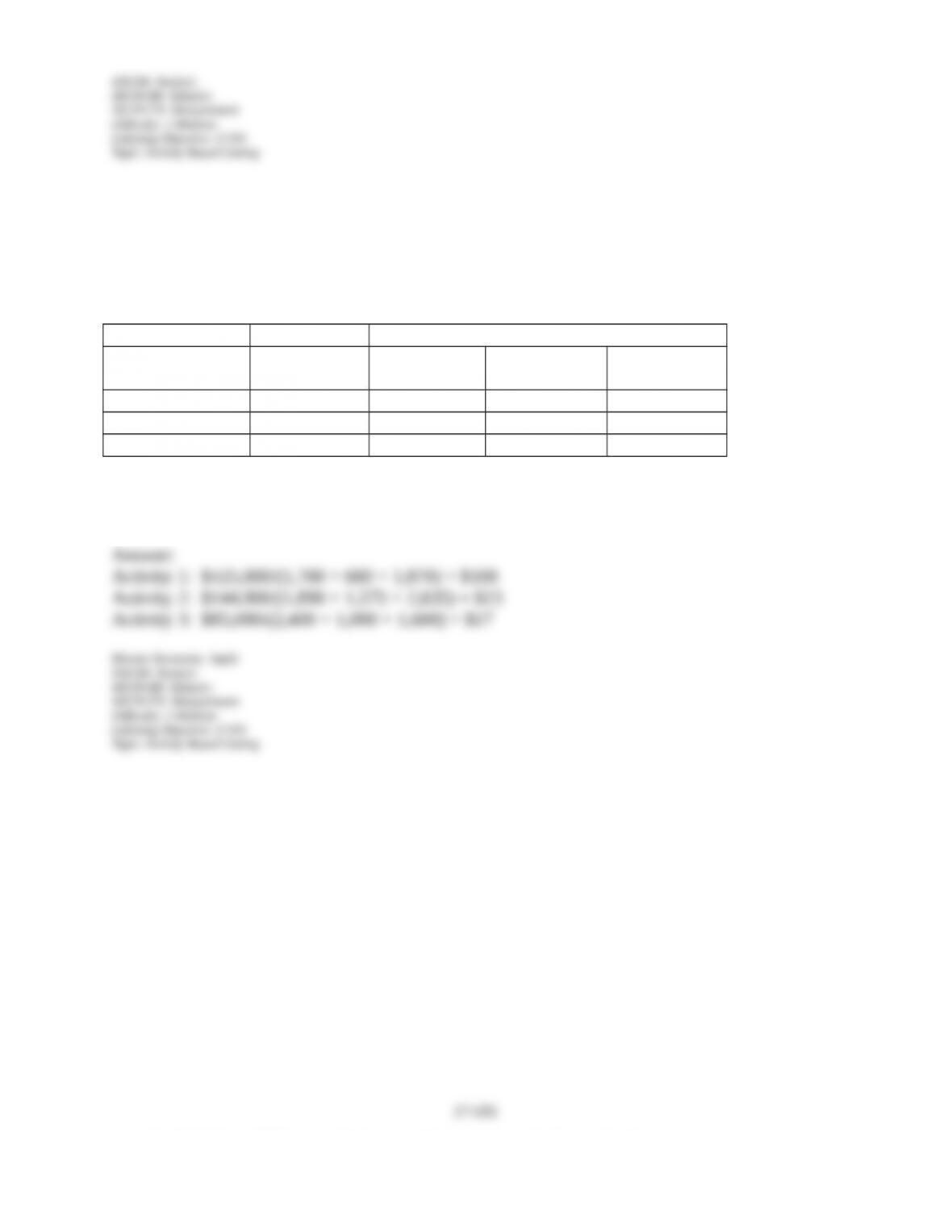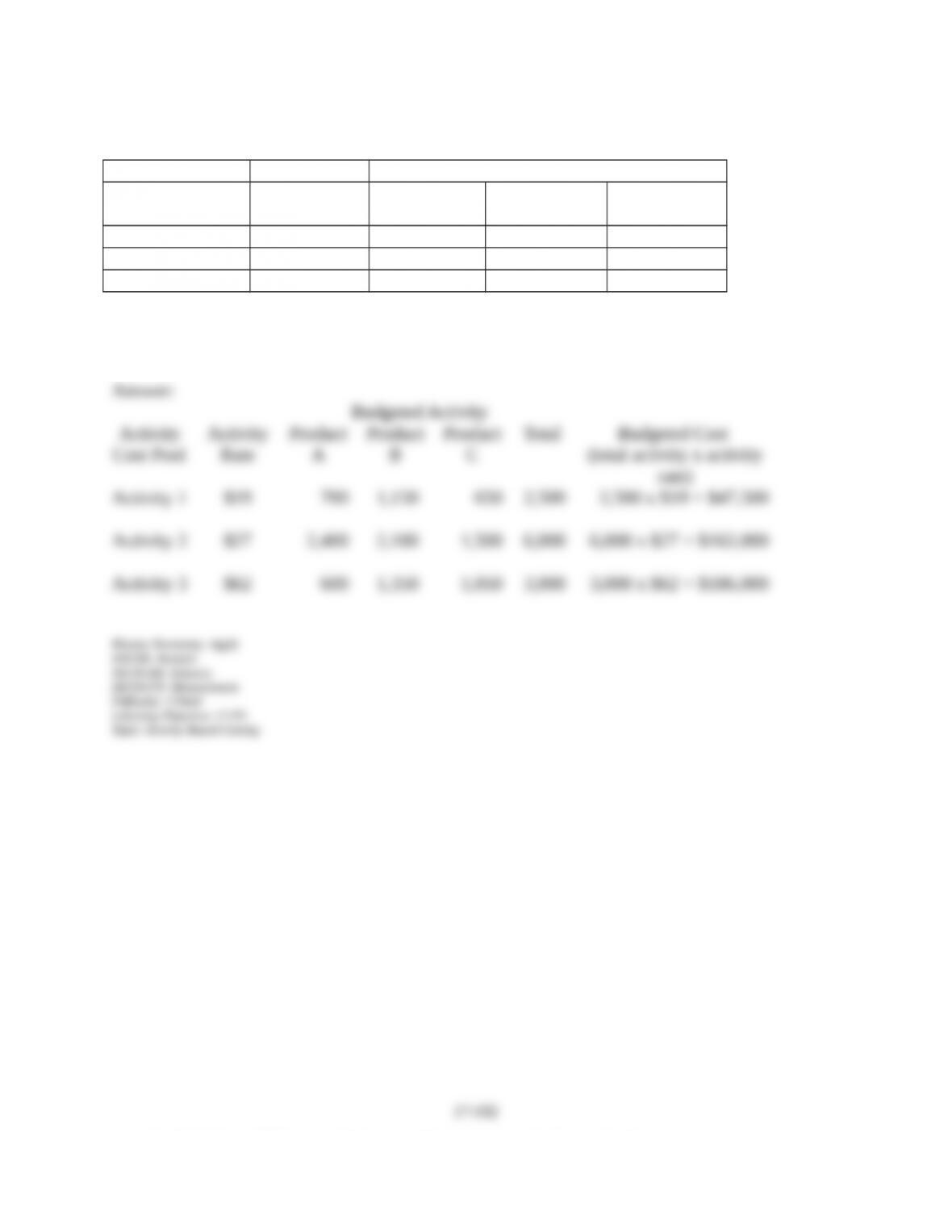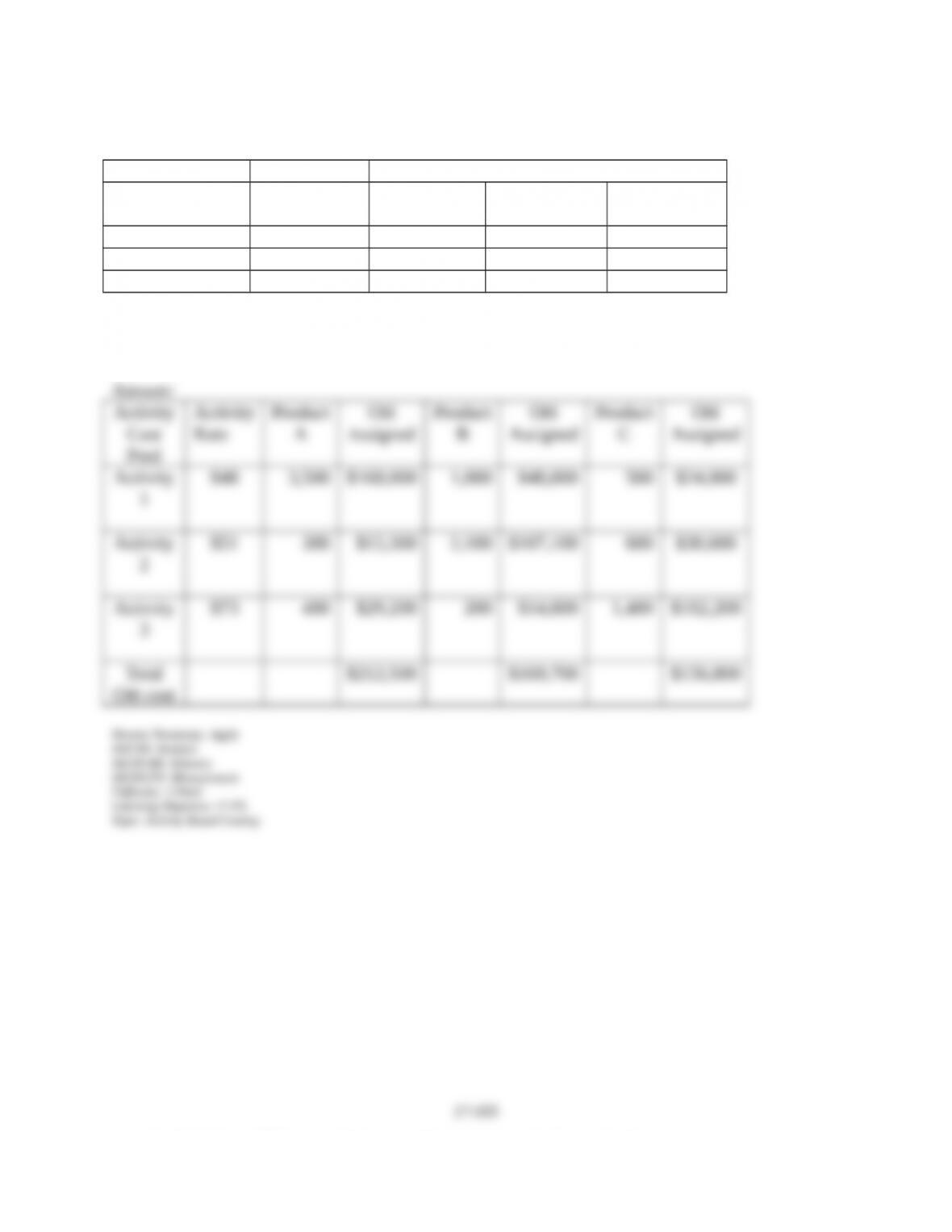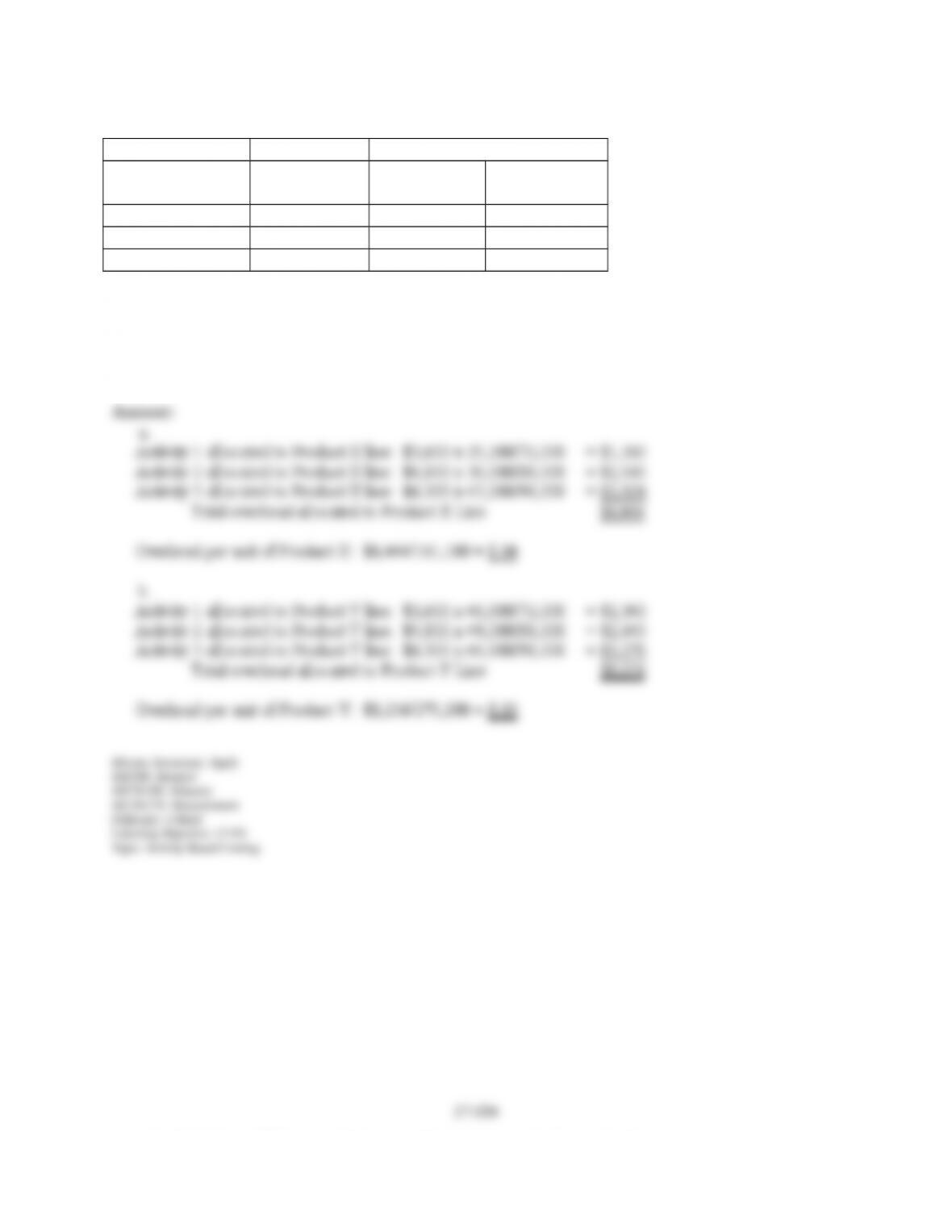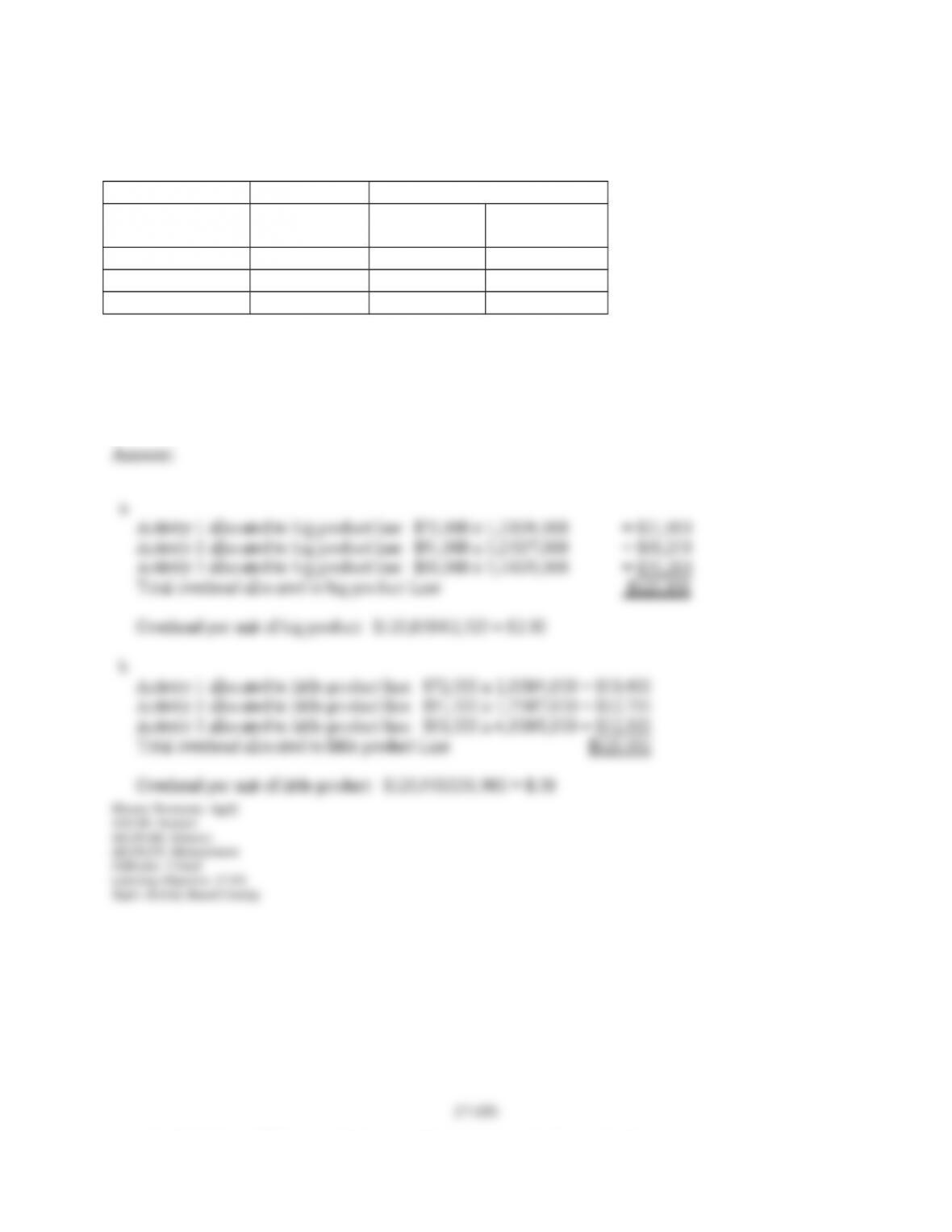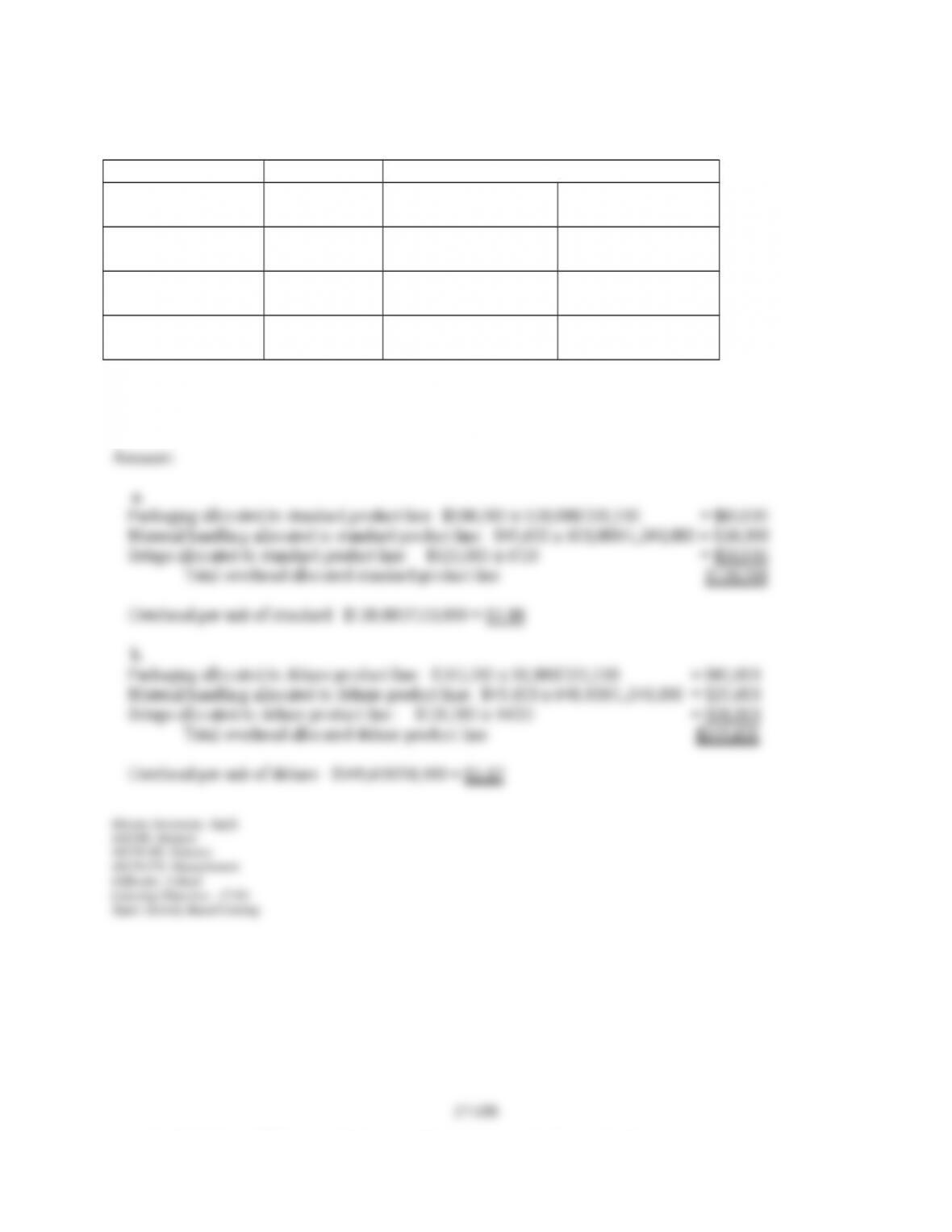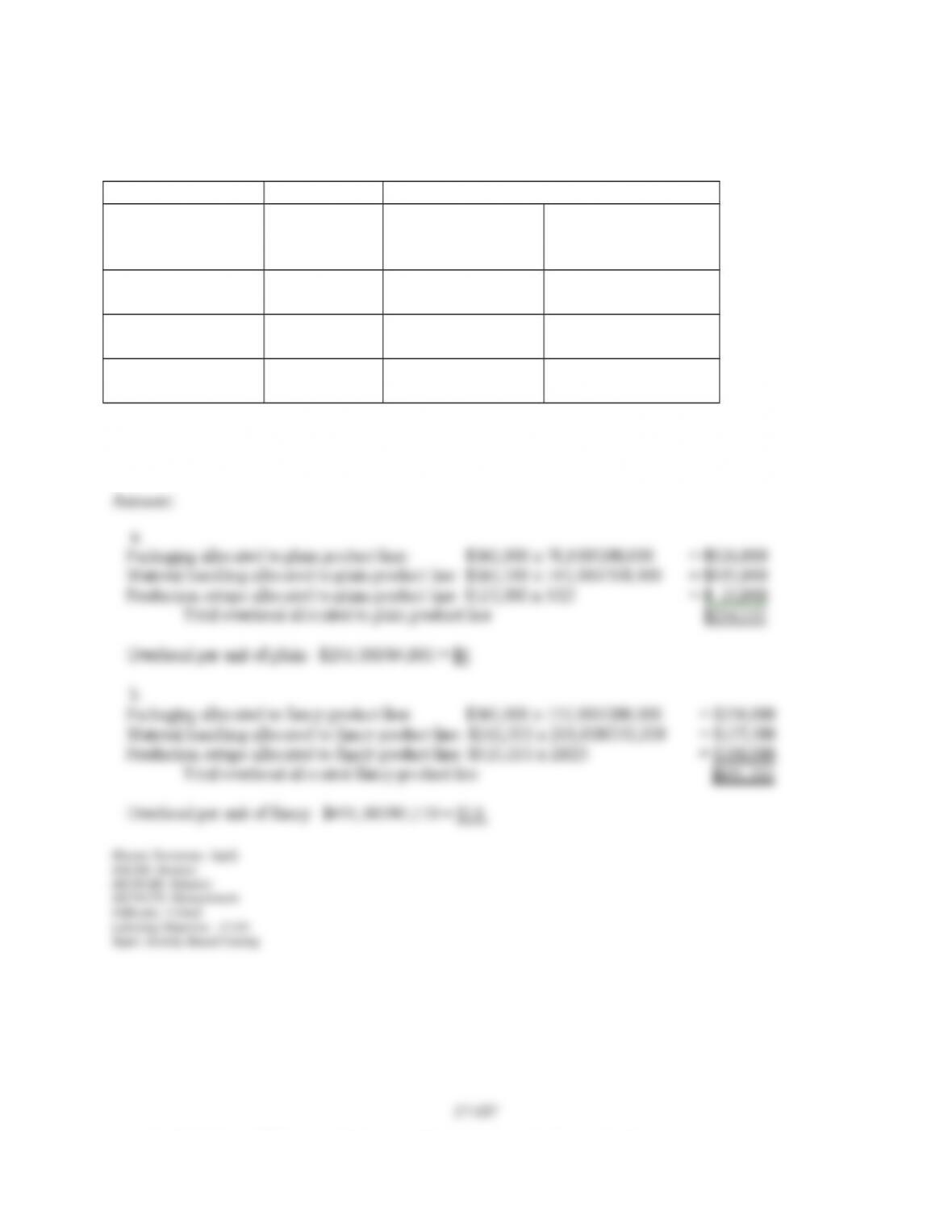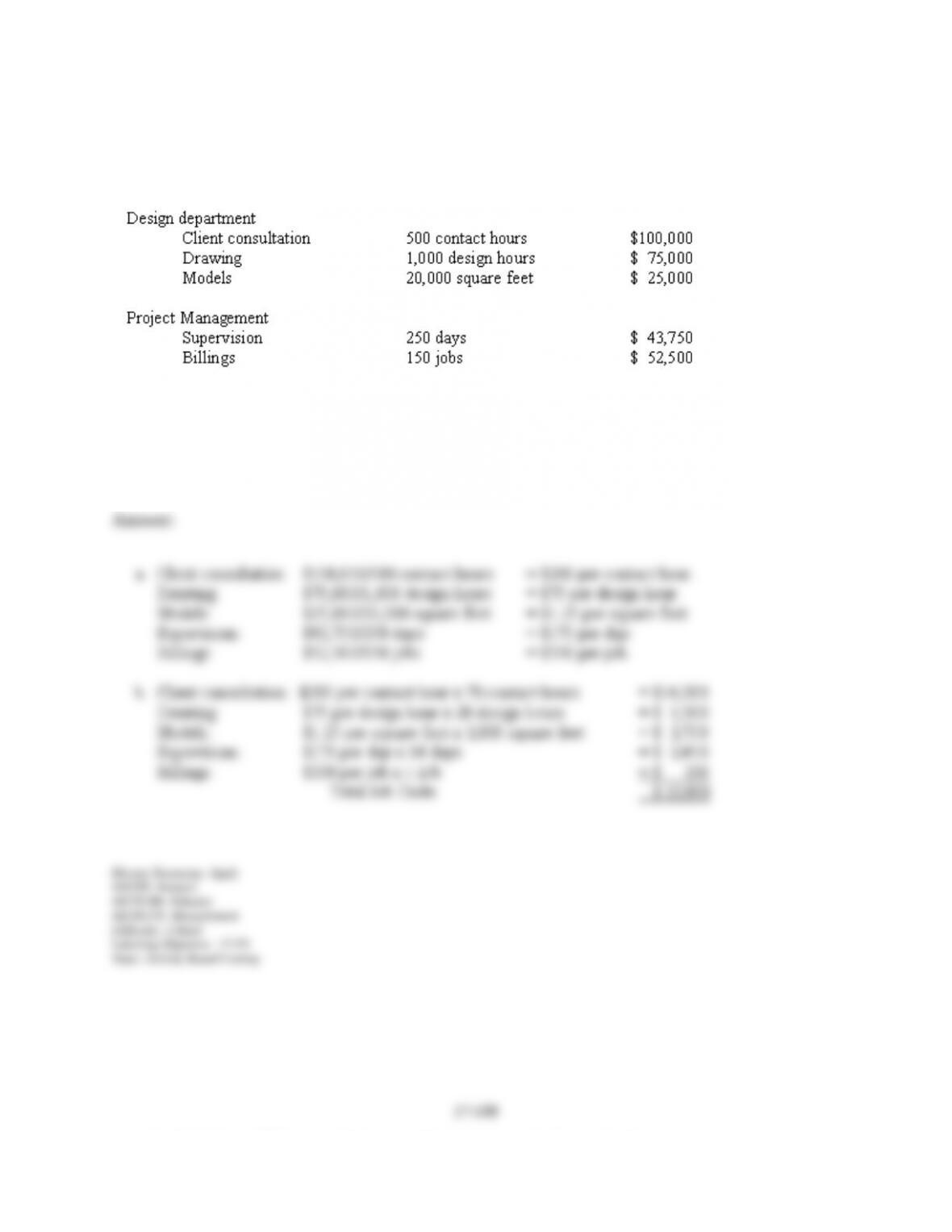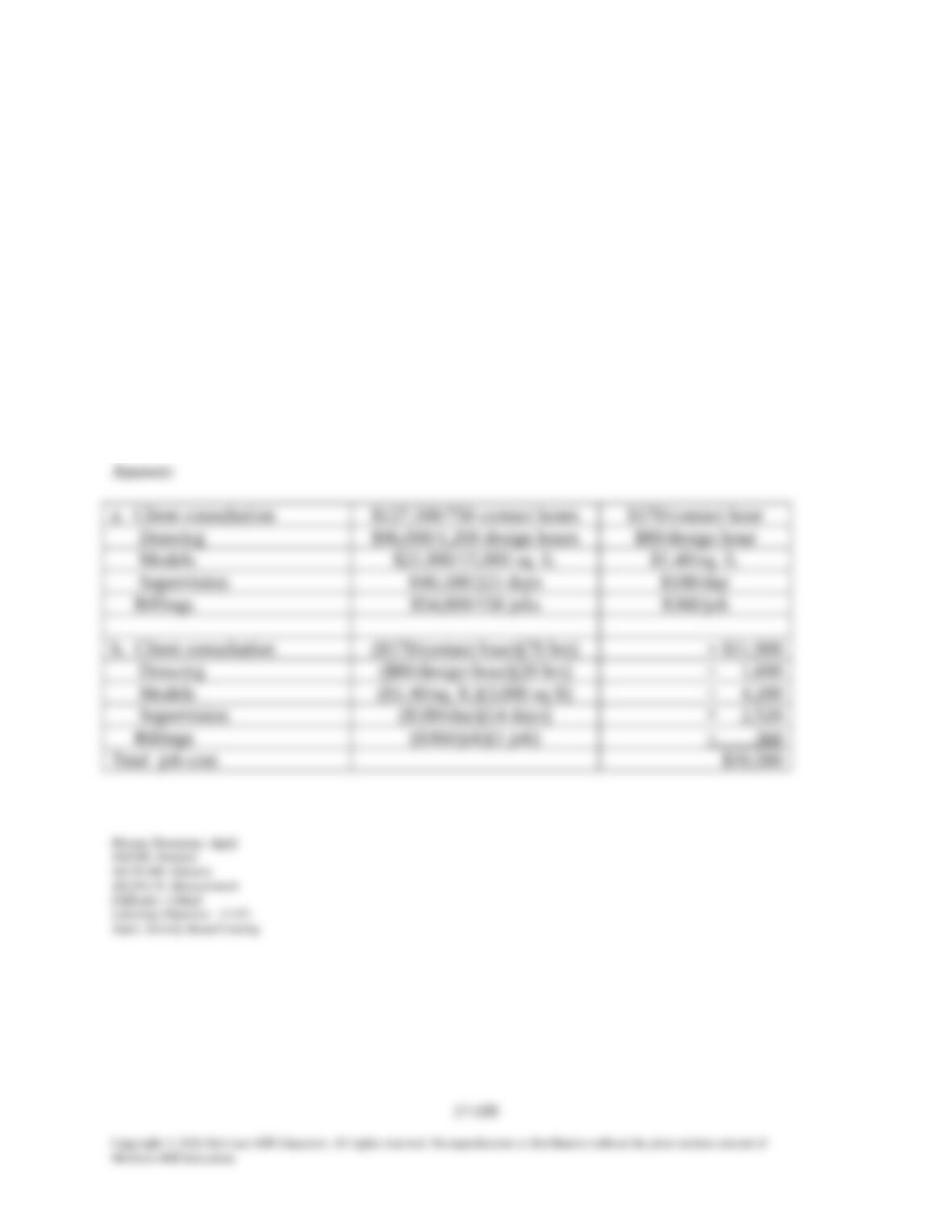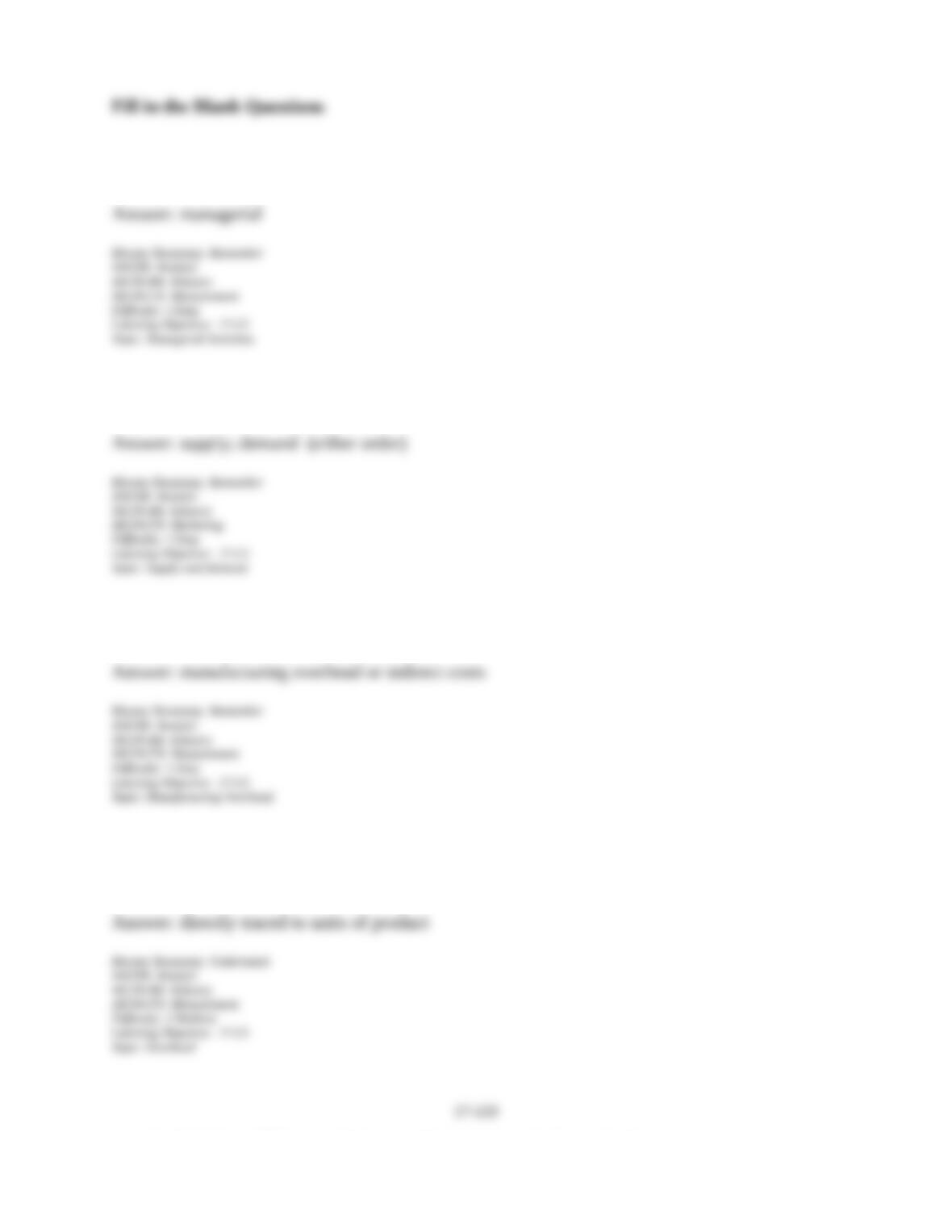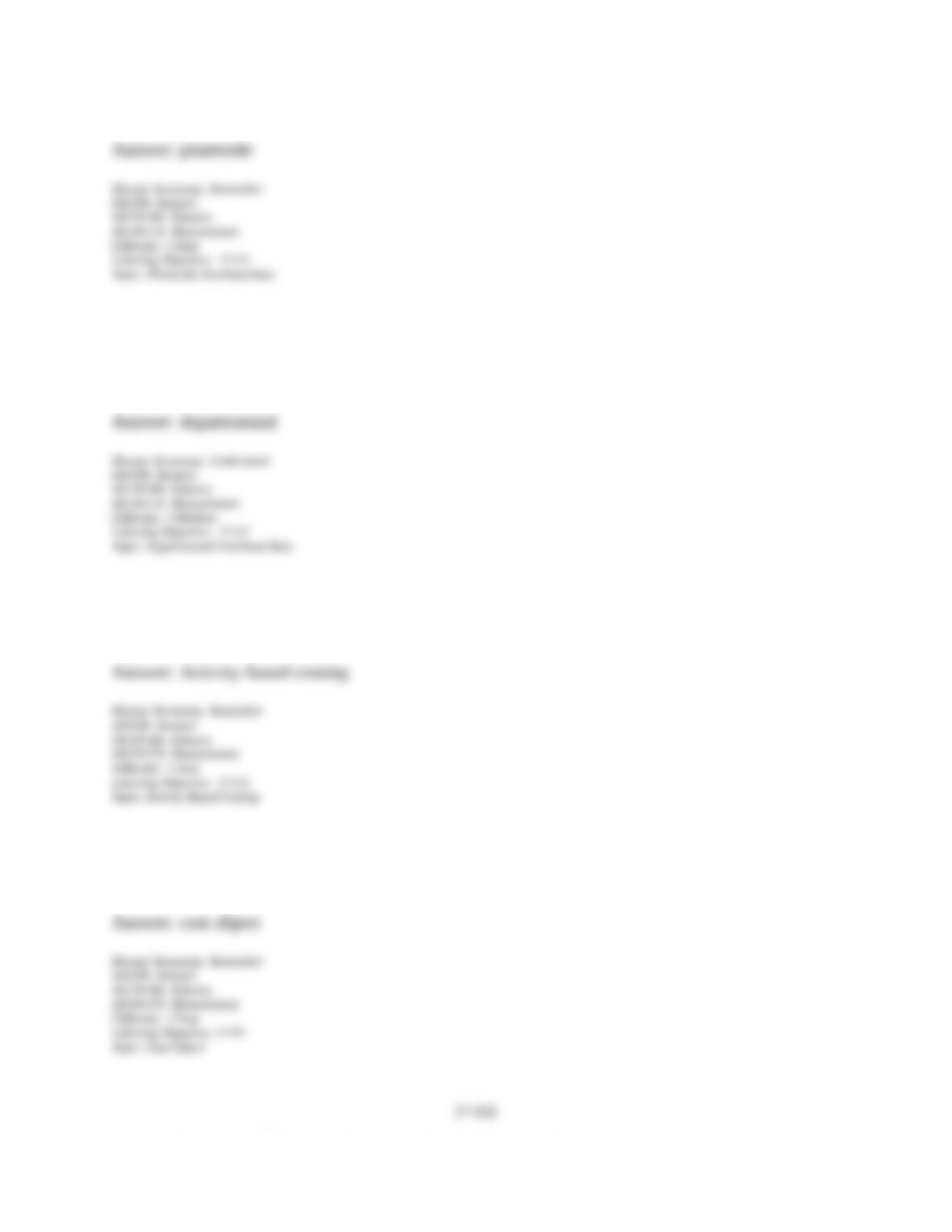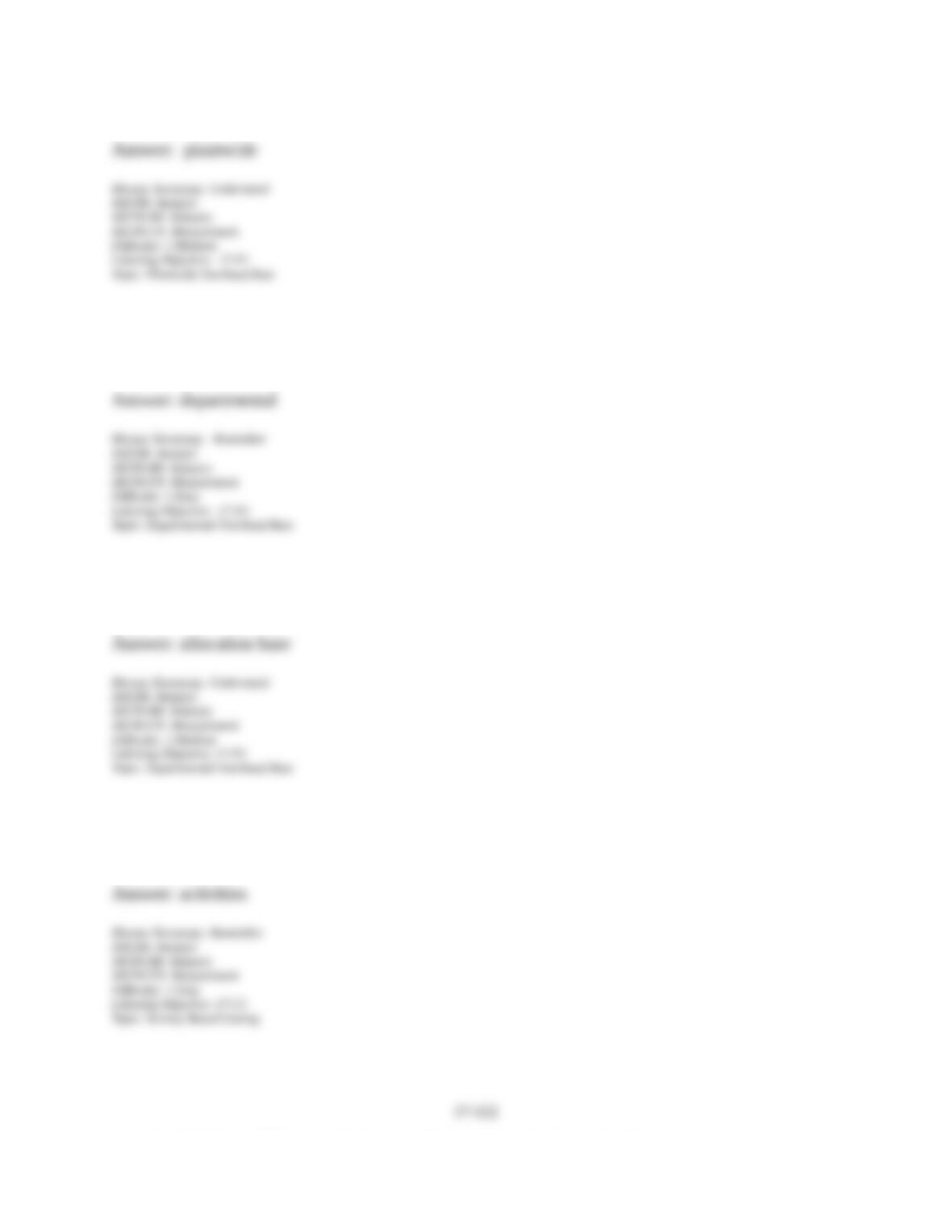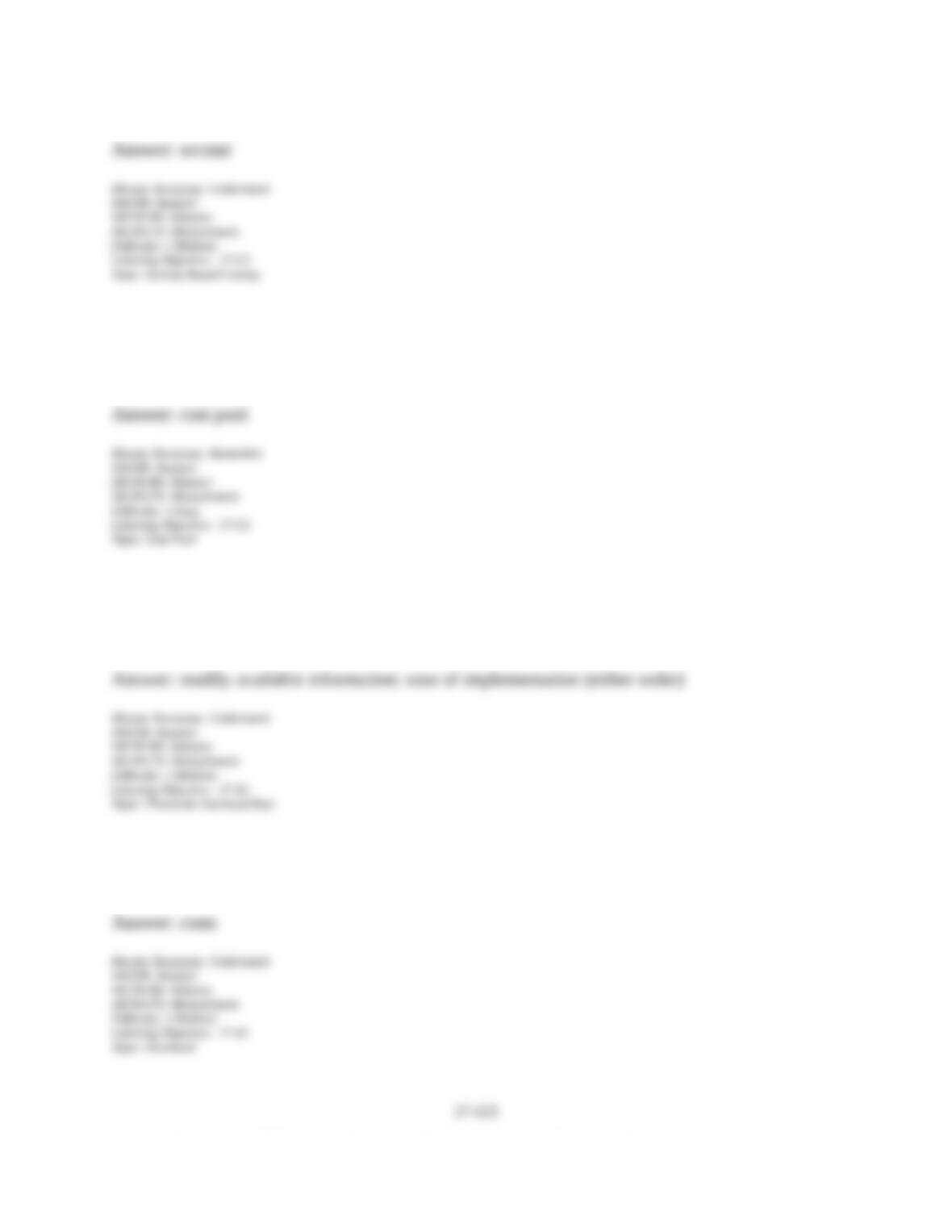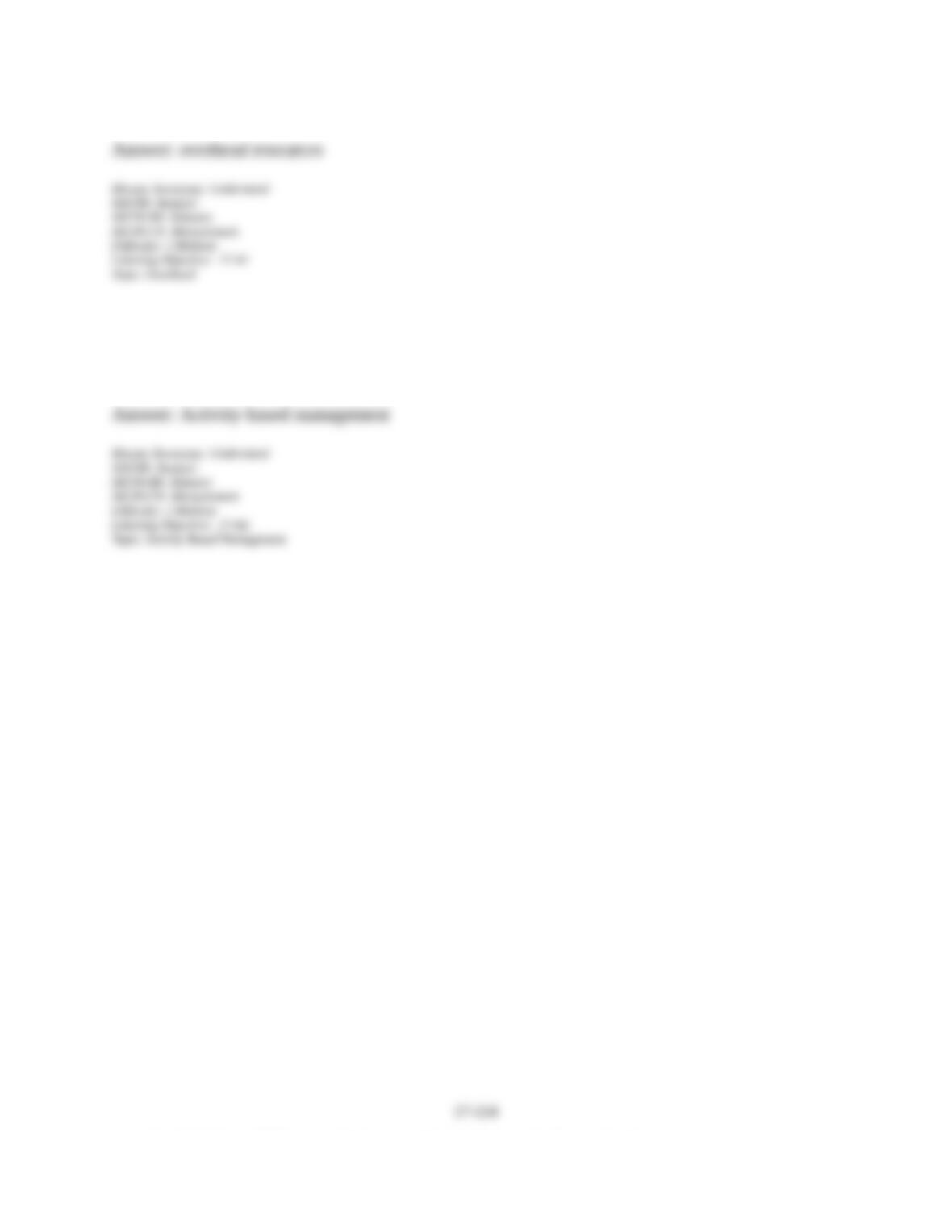173. Freeze Frame, Inc. produces cameras that require three processes, A, B, and C, to complete.
Digital camera model #789 is the best-selling of all the many types of cameras produced.
Information related to the 550,000 units of digital camera model #789 produced annually is
shown below:
Direct materials $450,000
Direct Labor
Department A (7,000 DLH x $21 per DLH) $147,000
Department B (25,000 DLH x $19 per DLH) $475,000
Department C (10,000 DLH x $26 per DLH) $260,000
Machine Hours
Department A 42,000 MH
Department B 23,000 MH
Department C 38,000 MH
Freeze Frame’s total expected overhead costs and related overhead data are shown in the
following table:
Department A Department B Department C
Direct labor hours 90,000 DLH 75,000 DLH 42,000 DLH
Machine hours 67,500 MH 135,000 MH 53,200 MH
Manufacturing overhead
costs
$540,000 $675,000 $399,000
a. Compute a departmental overhead rate for department A based on machine hours.
b. How much overhead is associated with model 789 from department A?
c. Compute a departmental overhead rate for department B based on direct labor hours.
d. How much overhead is associated with model 789 from department B?
e. Compute a departmental overhead rate for department C based on machine hours.
f. How much overhead is associated with model 789 from department C?
g What is the per unit cost of the 550,000 units of model 789?
Copyright © 2016 McGraw-Hill Education. All rights reserved. No reproduction or distribution without the prior written consent of
McGraw-Hill Education.

























































































